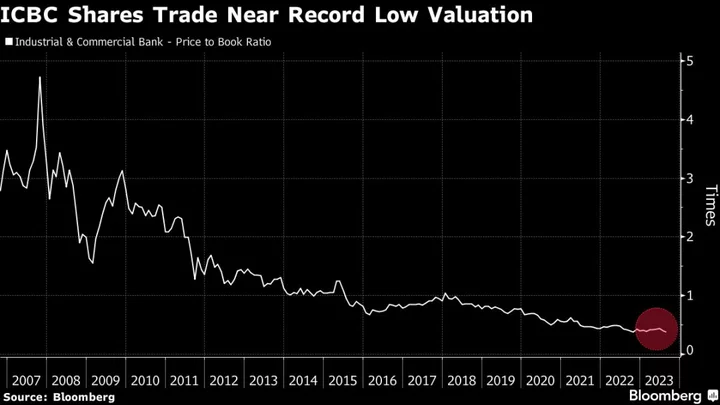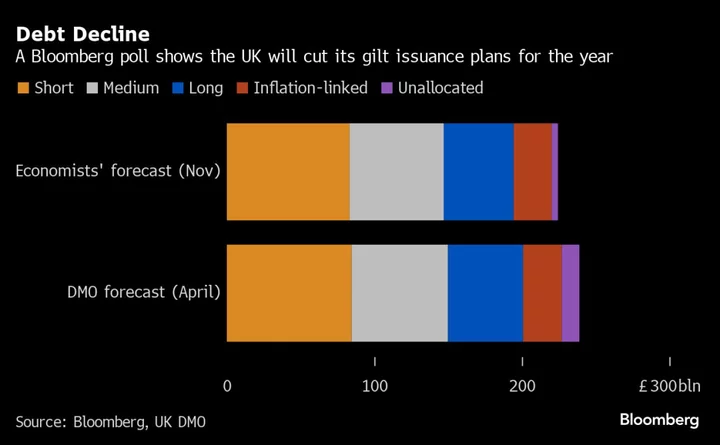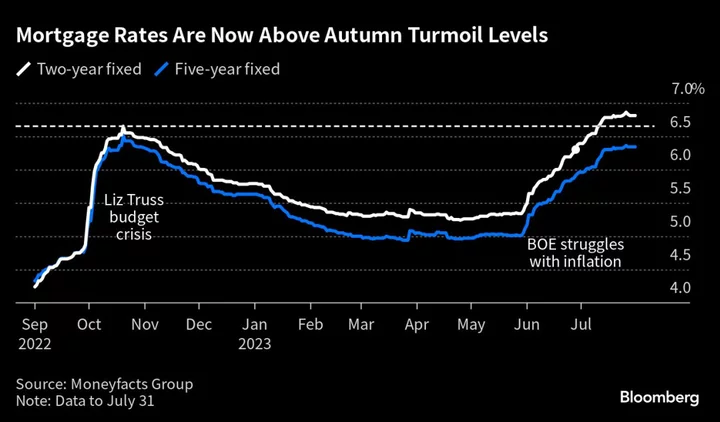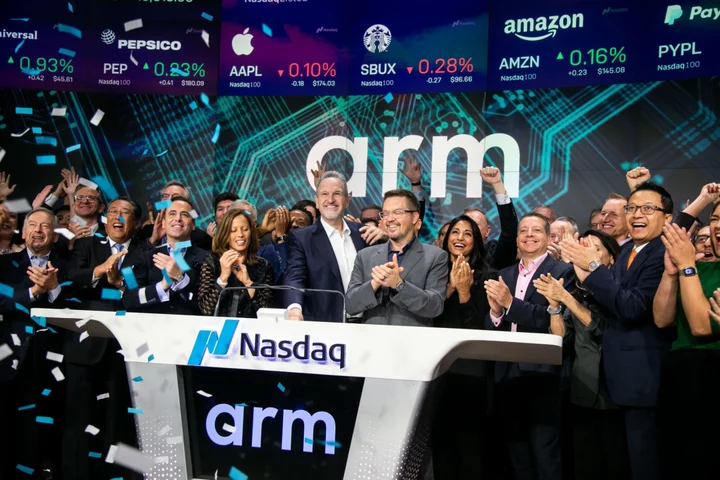General Motors Co. will boost its dividend by 33% and repurchase $10 billion of shares — its biggest-ever buyback plan — sparking renewed interest among investors in a stock that has slumped this year as the company’s technology investments have faltered.
The automaker is also reinstating 2023 earnings guidance to levels modestly below what it gave before a six-week United Auto Workers strike cut into profits. GM said net income will now be between $9.1 billion and $9.7 billion, compared to the previous range of $9.3 billion to $10.7 billion. During the strike, the company withdrew guidance.
The Detroit-based manufacturer is spending on the new investor incentives despite high interest rates that are threatening car sales and capital burdens from its electric-vehicle effort, which has yet to show significant results. GM is trying to prove to shareholders that it can generate huge amounts of cash while still investing in technology, hoping to lift a stock that trades lower today than when Chief Executive Officer Mary Barra took over in early 2014.
“Our results, especially our cash generation, have been very strong,” Barra said in a letter to shareholders Wednesday. GM is “confident in our ability to continue generating significant free cash flow as we make the EV transition.”
Barra pledged to “fully offset” the added labor costs and other outlays through greater efficiencies and largely unspecified cuts to fixed and variable costs in next year’s budget.
The automaker’s shares surged 8.9% in premarket trading to $31.45 in New York. The stock fell 14% this year through Tuesday, compared with a 19% increase in the S&P 500 Index.
GM will start by raising the quarterly dividend 3 cents a share to 12 cents beginning in 2024.
Under the advanced share repurchase plan, GM will pay $10 billion to a group of executing banks and immediately receive and retire $6.8 billion worth of common stock. The company had approximately 1.37 billion shares of common stock outstanding prior to the buyback.
The total number of shares repurchased will be based upon final settlement and the daily volume-weighted average prices of GM common stock during the term of the program, which will conclude in the fourth-quarter of 2024. The repurchase program will be executed by Bank of America Corp., Goldman Sachs Group Inc., Barclays Bank PLC and Citigroup Inc.
GM will have $1.4 billion of capacity remaining under its share repurchase authorization for additional buybacks.
Earnings Guidance
The company’s new guidance is below its pre-strike outlook, calling for earnings per share of $6.52 to $7.02 including the estimated impact of the buyback. That compares to a previous forecast for $6.54 to $7.54 a share.
Not counting the costs of the buyback program, GM’s adjusted EPS guidance is between $7.20 and $7.70 a share, down from a top estimate of $8.15.
GM said the new UAW contract — which gives workers minimum 25% raises along with cost-of-living allowances and other improved benefits — will add $9.3 billion in expenses over the 4-year, 8-month term, with new labor expenses peaking at $2.5 billion in 2027. That adds up to $575 a vehicle, GM said.
To help offset the expenses, the company said it will reduce fixed costs by $2 billion next year, achieving new efficiencies in design, engineering, manufacturing, marketing and distribution of its models and replacing some of its older SUVs with more profitable versions of those models.
GM’s stock has struggled in part because investors saw the strike resulting in higher labor costs. But there’s also an existential issue for GM and other legacy automakers. The internal combustion vehicle business is seen as being in a slow long-term decline, while none of the old-line carmakers have successfully sold EVs at large enough volume to keep up with Tesla Inc.
Under Barra, GM has achieved record profits but trouble at its battery pack facilities has kept EV production in the low thousands, while Tesla’s annual sales approach 1.8 million vehicles. GM’s Ultium battery pack was supposed to enable the company to make multiple types of electric cars off the same platform and beat competitors to market with a panoply of vehicles.
Barra said GM should have production fixed in 2024. EVs are a big piece of the automaker’s strategy to double sales to $280 billion by 2030.
“Although I am disappointed with our Ultium-based EV production in 2023 due to difficulties with battery module assembly, we have made substantial improvements both to the process and to the organization responsible for this work,” Barra said in the letter. “In 2024, we expect significantly higher Ultium EV production and significantly improved EV margins.”
Cruise Cuts
GM is also cutting spending on Cruise LLC, its San Francisco-based self-driving car unit. The robotaxi company last month suspended operations after one of its vehicles dragged a pedestrian for 20 feet. Cruise was costing the company $700 million a quarter before GM grounded its fleet and pulled back its growth strategy.
The unit’s CEO, Kyle Vogt, stepped down abruptly earlier this month.
Read More: Cruise CEO Vogt Resigns at GM’s Troubled Self-Driving Car Unit
Now Cruise will cut back its presence to one city from three previously, lay off workers and focus on making sure the technology is safe. Barra said expenses on Cruise will be cut back substantially.
(Updates with cost cutting details beginning in the fifth paragraph)









